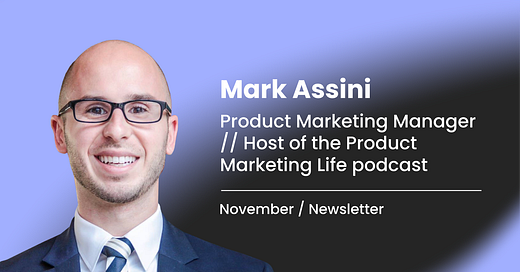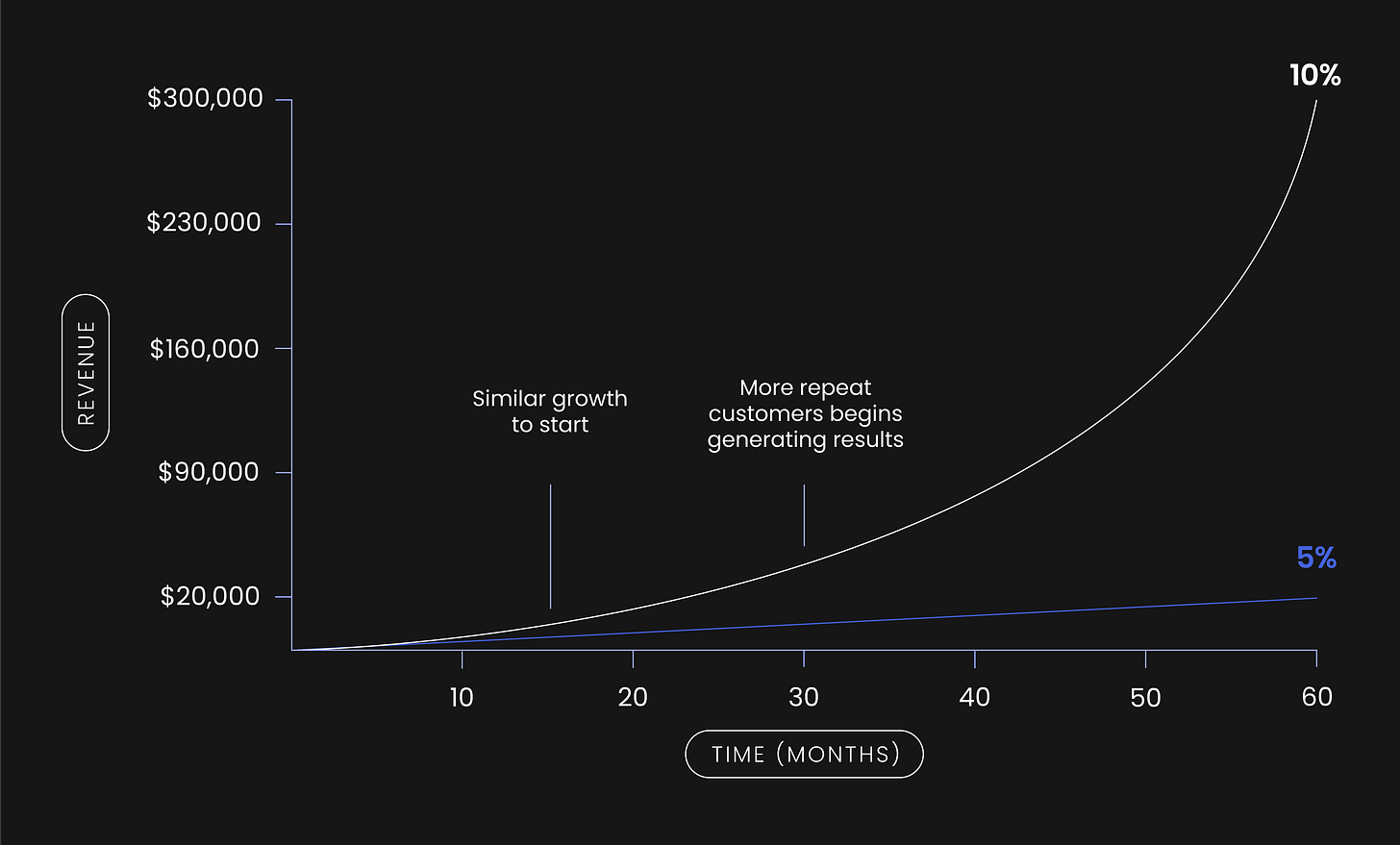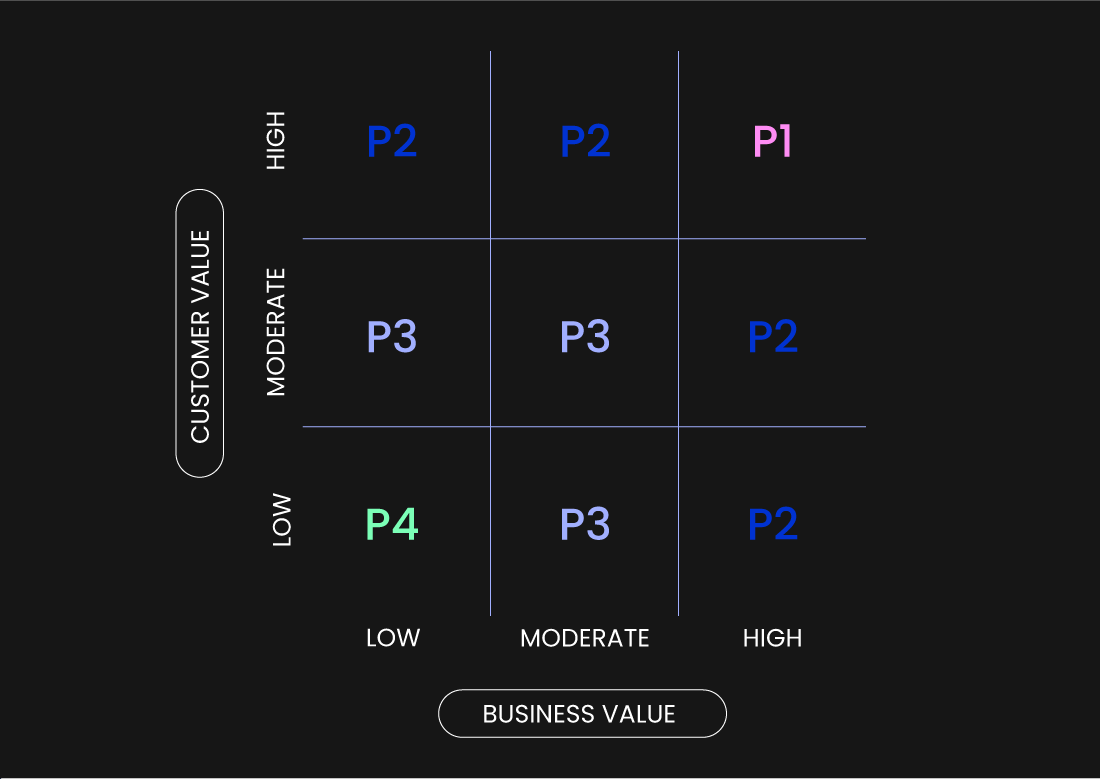Hi from the great white north 🇨🇦
Mark Assini here, Product Marketing Manager at Jobber and host of the Product Marketing Life podcast. I’m honored to be Olivine’s first guest newsletter author. Hopefully I can deliver the same quality content you’ve come to expect from the superstars at Olivine (they set an incredibly high bar).
Hot topic: product marketers need a better go-to-market and communications prioritization framework
TL;DR: As markets continue to crowd, product marketers need a better framework that optimizes customer value.
The current approach is broken
If you’ve been around product marketing long enough, you’ve probably come across this product announcement prioritization framework from Intercom:
The main thesis of this framework, published back in 2016, argues that product-related announcements and their corresponding tactics, should be prioritized based on how innovative the product or feature being launched is, and whether it’s of value to new or existing customers.
While this framework benefits from being straightforward and binary, there are three shortcomings.
#1 Is anything truly ‘new’ anymore?
Markets are becoming increasingly crowded and nearly every category is bursting at the seams with competitors. Take the Martech landscape for example: over 8,000 solutions, all focusing on marketing-related technologies. In a market like this, how often is anything truly ‘new’ being developed?
So what happens when you find yourself in a crowded market using this framework? You almost never get to support the launch of anything new, which means you’ll almost never be able to justify going to market with ‘P1 energy’. Instead, you get stuck in a loop of P2s and P3s (and more often P3s and P4s), which not only makes for repetitive ‘cut and paste’ go-to-markets, it also rarely gives your customers a reason to be excited about your product.
#2 Is attracting new customers inherently more important than retaining existing ones?
You know what else happens in crowded markets? There are too many companies fighting for the attention of customers that are spoiled for choice, which drives up customer acquisition costs. In times of shrinking marketing budgets, it becomes increasingly important (and cost effective) for businesses and product marketers to place more focus on customer retention (after all, a 5% increase in customer retention produces more than 25% increase in profit, according to this 2001 study by Fred Reichheld at Bain & Company).
That’s where this product launch framework falls down. It values attracting new customers over retaining existing ones, by allocating P1 and P2 priorities to updates or features that may help acquire new customers, and relegating updates or features that help retain existing ones to P2 and P3.
#3 Failure to apply a customer-centric lens
It’s been drilled into our heads that we need to obsess over what our customers care about. It’s then our responsibility to communicate those values, needs, and wants not just to our internal teams, but back to our customers through the frame of how closely our solutions align to those values, needs, and wants.
Where is that customer lens applied in this framework? Nowhere. Instead it takes an inward perspective. What are we doing that is new? Are we going to attract new customers or retain existing ones?
At the same time, because of this narrow focus on the business, it only considers product updates or features. But what about other activities that have a direct impact on customers? Things like pricing and packaging changes or terms of service updates typically land in the lap of product marketing to communicate and have a direct impact on customers, but wouldn’t land anywhere on this framework.
Product marketers, and customers, deserve better
So how do we fix what’s broken? Simply, we come up with something better:
Activities that have the highest impact on driving customer AND business value are given the greatest priority and effort. Activities that have little to no impact on either are given the least. The effort and tactics you assign to each priority is entirely up to you and your teams. So, instead of diving into those tactics specifically, let’s look at how each of those two axes are defined.
Defining Business Value
Businesses exist to generate a profit. That’s why I’ve oriented the x-axis of Business Value around a given activity’s impact on profit:
High Business Value: These activities have a direct impact on the business’ profit. In other words, they can help it acquire new customers, increase top-line revenue without necessarily acquiring new customers (like through customer retention or expansion), or significantly reduce operating costs.
Moderate Business Value: These activities have an indirect impact on the business’ profit. Activities that help improve core KPIs like engagement, activation, and customer satisfaction, as well as ones that generate a positive brand lift, live here.
Low Business Value: As you would expect, these activities do neither of the above. These are your less sexy, “it’s part of the job” type of activities, like bug fixes or incremental improvements to the UI/UX.
Defining Customer Value
This is where things will vary greatly from business to business. Depending on how your company defines customer value, the definition of the y-axis will change. Ideally though, your internal teams are aligned to that value and how it is applied to this framework.
High Customer Value: These activities have a direct impact on that value. In the example of a business selling business management software to SMBs, these could be activities that directly allow a customer to improve their own profitability.
Moderate Customer Value: These activities have an indirect impact on that value. They have a dotted line connection to impacting the value metric. In other words, if the High Customer Value metric is the output metric, the Moderate Customer Value metrics are the input ones.
Low Customer Value: These activities have no impact on that value. Again, much like for Business Value, these are typically bug fixes, UI/UX improvements, or quality of life (within the product) changes.
Disclaimer: Don’t be too rigid.
As I mentioned earlier, there’s no reason why a P2 with Moderate Business Value couldn’t be elevated to a P1, given its relatively high Customer Value. That’s the flexibility of this framework. It points you in the right direction. It saves you from walking into prioritization conversations with a “gut feeling” or loosely held opinion on how important a given activity is and how much airtime it deserves.
What do you think?
This framework is still a work in progress. I’m still putting it through its paces to see where it works and where it doesn’t. I’d love to get your feedback! Let me know what you think on LinkedIn.
Top tweet

I'm a big fan of this tweet from Justin Gordon! Not only do I wish I had known a lot of what Justin teaches in his course for hosting the Product Marketing Life podcast, I also wish I had known:
How challenging it is to find guests with a story or insights worth sharing;
How critical it is to define your audience and the show’s purpose before recording, and;
How hard it can be to get listeners to leave a review.
Fresh finds
Tool I love
I recently saw the Hemmingway Editor recommended by a fellow product marketer so I figured I’d give it a shot. It’s now become my go-to tool whenever I’m writing copy.
Shallow dive
This Linkedin post from the great Jason Oakley at Klue answers a question every product marketer has been asked: “what’s your revenue impact?”
Deep dive
Phil Agnew’s Nudge podcast is a great listen for anyone interested in the intersection of marketing and psychology. Phil also has a great British accent, which immediately makes his podcast 10x more listenable in my opinion.
Thanks for having me!
Inside Olivine
Content Gems
WATCH OUR MUSIC VIDEO — filmed live from our Airbnb during our co-working week in Portugal (see more from our offsite here)
Product launches: when should product marketing get involved?
Client Happenings
Padex, AI-powered PDF patent analysis tool, is now in closed beta and looking for design partners.
Smallstep developed new messaging for their Certificate Manager GA product and is growing the team with Jonathan Stoikovitch as Head of Product and Sam Neil as Head of Sales.
Open marketing roles
Benefex (based in UK) is hiring a copywriter
Smallstep is hiring a Product Marketing Manager
See more open roles on our job board
P.S. We’ve added new consultants to Olivine Marketplace which to connect startups with vetted product marketing & growth marketing consultants. Hire a consultant or apply to be one.









